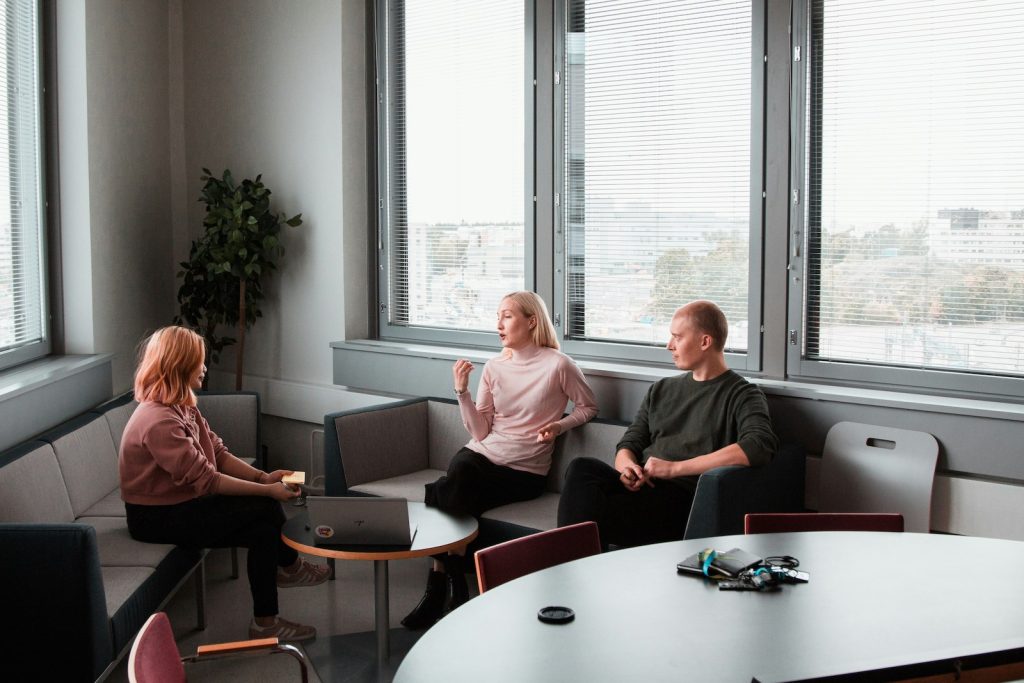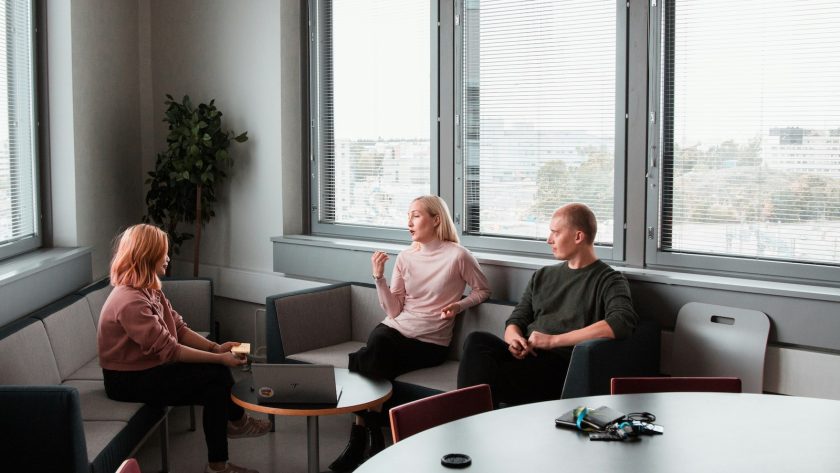
How does mentoring and coaching fit into employee development programs? In the quest to cultivate a thriving workplace, we’ve gathered insights from eight seasoned professionals, including CEOs and HR Directors, on integrating training, mentoring, and coaching into employee development programs. From the impact of mentorship on trust and safety to the effectiveness of targeted training and ongoing development strategies, these leaders share their strategies and outcomes.
- Mentorship Enhances Trust and Safety
- Bespoke Learning Approaches Preferred
- Structured Mentorship Fosters Team Growth
- LMS Customized for Role-Specific Development
- Project-Based Learning with Personalized Goals
- Comprehensive Training Boosts Efficiency and Innovation
- Customized Training Through Observation and Practice
- Targeted Training and Ongoing Development Strategies
The Research
Public Personnel Management: Training increased productivity 22.4%. Training + Coaching provided an 88% productivity gain.
Xerox Corporation: in the absence of follow-up coaching, 87% of the skills change brought about by training or development programs was lost.
MetrixGlobal LLC found coaching produced a 529% ROI and the financial benefits from employee retention boosted the overall ROI to 788%.
Mentorship Enhances Trust and Safety
Mentorship fuels and ignites relationships. When grounded in values like integrity, authenticity, and humility, it increases trust and workability among peers and leadership. It also creates psychological safety, where our people feel supported regardless of difficult times or mistakes. I believe in-person training, development, and mentorship aren’t just important but crucial to the success of our people.
We intentionally incorporate in-person development at every level of our training programs, from initial training to the C-suite. We integrate a harmonious blend of online learning, side-by-side, cohort, and mentorship into every level of our organization. We have seen success in engagement, relationship building, retention, long-term growth, and results within our organization.
Michelle Cooke, Director of Training, Development and Internal Brand, Earls Restaurant and Bar
Bespoke Learning Approaches Preferred
As a business, we’re all in on how our employees want to learn, in terms of responding to what employees prefer as a learning approach. Whether that’s mentorship or remote courses, we prefer taking the bespoke approach rather than a “one-size-fits-all” mentorship or training strategy.
Tracey Beveridge, HR Director, Personnel Checks
Structured Mentorship Fosters Team Growth
At Torokhity Weightlifting, we believe a strong team built on knowledge and support is key to our success. That’s why we offer training, mentoring, and coaching to contribute to employee development.
At the start of the year, we hold open conversations. We ask where each employee wants to take their career, e.g., become a coach, specialize in weightlifting, shift to business development, etc. Understanding their direction helps us create the perfect pairing for our mentorship program.
After creating matches, they come up with topics they will be covering for the next six months during their bi-monthly meetings. However, mentees are open to reaching out to their mentors for urgent issues at any time. The structure of each meeting is centered on the needs of the mentee, and the mentor offers guidance from their own experience. The mentors get the satisfaction of helping others, as mentees gain valuable knowledge and skills. This program encourages continuous learning and growth.
Oleksiy Torokhtiy, Founder, Torokhtiy Weightlifting
LMS Customized for Role-Specific Development
We developed a Learning Management System for training our employees. Employees get 24/7 access to learning resources, including industry-standard courses covering different software development disciplines—programming, AI advancements, etc. We also have internal content on our LMS, which we create through ScreenPal for in-house training materials for our projects and technology.
We customized the LMS to enhance the learning experience for each employee, depending on their role, skill gap, and career goals. Beyond training, the LMS is a complementary resource to our mentoring and coaching programs. The skills our employees develop are reinforced during mentoring sessions where the experienced developers offer guidance and support. The LMS gives employees ownership of their professional development, encouraging autonomy and engagement.
Serhii Antoniuk, CEO, LITSLINK
Project-Based Learning with Personalized Goals
We believe in learning by doing, so our employee development program is heavily focused on project-based learning.
Employees are paired with experienced team leads who will guide them through real projects. These regular one-on-one meetings help identify areas for improvement and create personalized development plans. We also offer funding for relevant courses and conferences. This ensures employees stay current on industry trends and have access to the latest technologies.
Plus, managers work closely with their teams to define individual development goals. Whether it’s mastering a new software program or becoming a stronger communicator, these goals are translated into clear targets and project assignments. This approach allows employees to learn and grow in a way that benefits both themselves and the company.
Kimberley Tyler-Smith, VP of Strategy and Growth, Resume Worded
Comprehensive Training Boosts Efficiency and Innovation
In my experience running Wastebox, integrating training, mentoring, and coaching into our employee development programs has been key to our success, especially in the highly competitive dumpster and waste management industry.
For example, we initiated a comprehensive training program focused on operational safety and efficiency techniques, which not only honed our team’s skills but also minimized accidents drastically, improving our service delivery time by 18%. Mentoring has been another cornerstone of our development strategy, creating a supportive environment that fosters growth and innovation.
By pairing new hires with experienced managers, we’ve cultivated a culture of knowledge sharing that led to a 25% increase in innovative project proposals within the company. This approach not only speeds up the onboarding process for new employees but also reinforces our core values of collaboration and continuous improvement. The personalized coaching sessions we offer, particularly to our mid-level managers, have significantly enhanced our leadership pipeline. We focused on strategic thinking and problem-solving, which prepared them to take on more significant challenges.
As a result, we saw a 30% improvement in leadership effectiveness as measured by employee engagement scores and project outcomes. This not only demonstrates the impact of a well-rounded development program on individual performance but also its cascading effect on team and organizational success. Through these efforts, we reinforce the belief that investing in our people is investing in the future of Wastebox.
Keith Kepplin, CEO, Wastebox
Customized Training Through Observation and Practice
Our approach at Jeenam Infotech includes all three. We first identify what our team members know so we can build upon that. We have learned that people understand new concepts when they are based on the context of their existing knowledge. The learning process starts by observing our employees at work. We get to know their current understanding of concepts, methods, and the reasoning behind their methods. Then, we can come up with a customized training strategy.
Our training relies on “see one, do one, teach one.” An employee observes a more experienced colleague doing a task. They can ask questions, seek clarifications, etc., to internalize the process. Next, they “do” the task they observed under supervision for practical, hands-on learning. Then, they solidify their understanding by teaching the process to another employee. Feedback from employees shows an increased sense of belonging and accomplishment. This process has created an avenue for mutual growth and shared success.
Mayur Bhatasana, Co-Founder & CEO
Targeted Training and Ongoing Development Strategies
I see training, mentoring, and coaching as three important pillars in an employee’s overall development, and each is best utilized at different stages of their career and tenure with the company.
Training is the most targeted of these three strategies. We offer training to employees whenever they are taking on a new role or taking on new tasks or responsibilities in their current role, necessitating an expansion of their knowledge or skill sets. When the employee is a new hire, or taking on a completely new role, the training is conducted in-house. We’ll also bring in trainers when there’s a change that affects multiple team members, such as if we’re adopting a new technology or system.
In other cases, we may outsource the training by covering the cost of third-party learning for employees who need it, for instance, if gaining a new professional certification will enable the employee to better perform that aspect of their job.
Coaching and mentorship are ongoing employee development activities. Coaching is the most consistently utilized across our teams and is done on the manager-report level during regular one-on-one meetings that are conducted either monthly or quarterly, depending on the employee and the team they’re in. This will be somewhat targeted as well, but more personalized to that particular employee. Often, it starts with the manager and employee having a conversation to identify some key areas for improvement, then they set progress goals together and work towards those over time.
Mentorship is also an ongoing process, although it’s not as broadly applied across the team. This is normally something we’ll integrate for employees we see as having strong potential for leadership roles in the future. Like with coaching, the mentee and mentor collaborate to identify the main areas the mentee wants to work on.
What’s different from coaching, though, is that the mentee is more likely to direct this, and to be the main one identifying which specific skills or areas they want to focus on. The goals that are set also tend to be more high-level and long-term compared to coaching. Often, an employee will receive both coaching from their direct manager and mentorship from a more senior leader, with the coaching focused on improving their performance in their current role and the mentorship focused on developing the skills they will need in future roles.
Jon Hill, Chairman & CEO, The Energists
A note: ICF does not recognize coaching a direct report as coaching because of the inherit conflict of interest.
Clearly coaching is often an untapped resource. Training and mentoring are common go-to options and have been part of organizations’ development strategies for a long time. In recent decades, coaching has become the fastest growing profession because it works. The research shows coaching adds tremendous value to training and mentoring programs.




